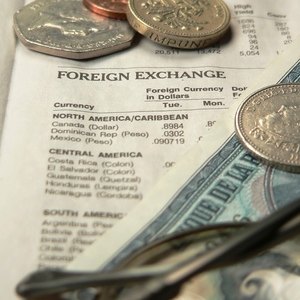
Changing interest rates are a way for the Federal Reserve to help the economy move toward sustained economic growth. When the Fed makes interest rate changes, it does not necessarily affect all consumers. It only affects those with variable rate loans and credit cards. Changes to interest rates do, however, affect the economy as a whole.
Spending
During a slow economy, interest rates often decrease, making borrowing money less expensive. The effect of this interest rate change is to encourage consumers and businesses to spend more by taking out more loans, stimulating economic growth.
If the economy is growing too quickly, it can lead to severe economic downturns. Interest rates often increase, making borrowing more expensive. An increased interest rate discourages businesses and consumers from borrowing in an effort to decrease spending and prevent an economic decline.
Inflation
When inflation is high, interest rates often increase because dollar value is too low and spending is too high. Rate increases make credit more difficult to obtain in an effort to slow spending and the rate of inflation, while increasing dollar value.
When inflation is low, interest rates often decrease because both dollar value and spending are low. Rate decreases make credit more accessible in an effort to increase spending, increase dollar value and stabilize the rate of inflation.
Stock Market
Interest rate increases initially cause the price of securities to fall because investors are buying fewer stocks. Eventually, the prices will fall low enough to induce investors to begin buying again, causing an increase in stock prices.
Interest rate decreases cause the price of securities to rise, increasing the demand for stocks. This leads to an increase in securities purchases and is a sign of economic growth.
References
- AFFECT | definition in the Cambridge English Dictionary
- Finance Trading Times: How Interest Rates Affect Stock Prices
- Federal Reserve Bank of St. Louis Economic Data. "Effective Federal Funds Rate." Accessed Oct. 13, 2019.
- Federal Reserve Bank of St. Louis Economic Data. "Inflation, Consumer Prices for the United States." Accessed Oct. 13, 2019.
Writer Bio
Sue-Lynn Carty has over five years experience as both a freelance writer and editor, and her work has appeared on the websites Work.com and LoveToKnow. Carty holds a Bachelor of Arts degree in business administration, with an emphasis on financial management, from Davenport University.

